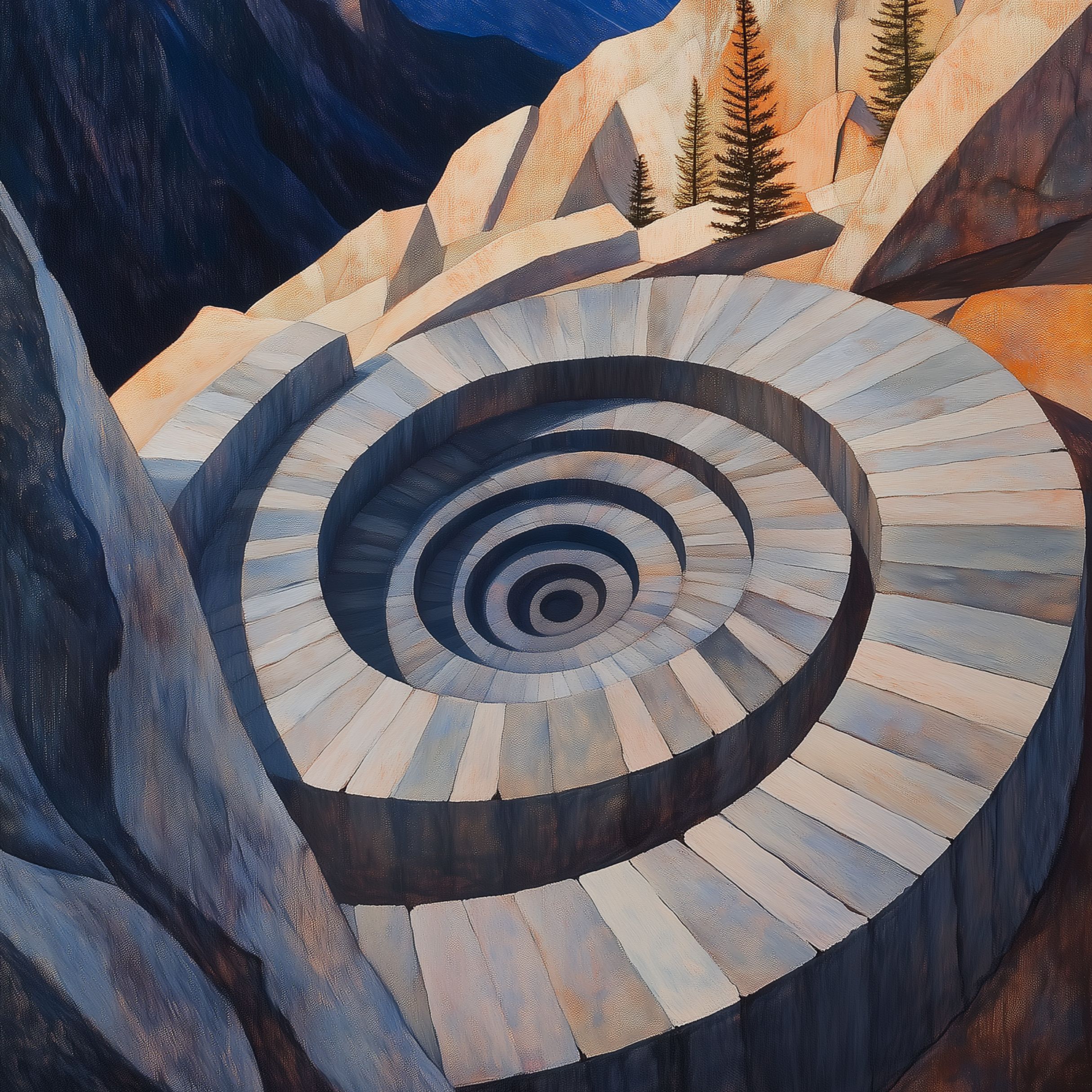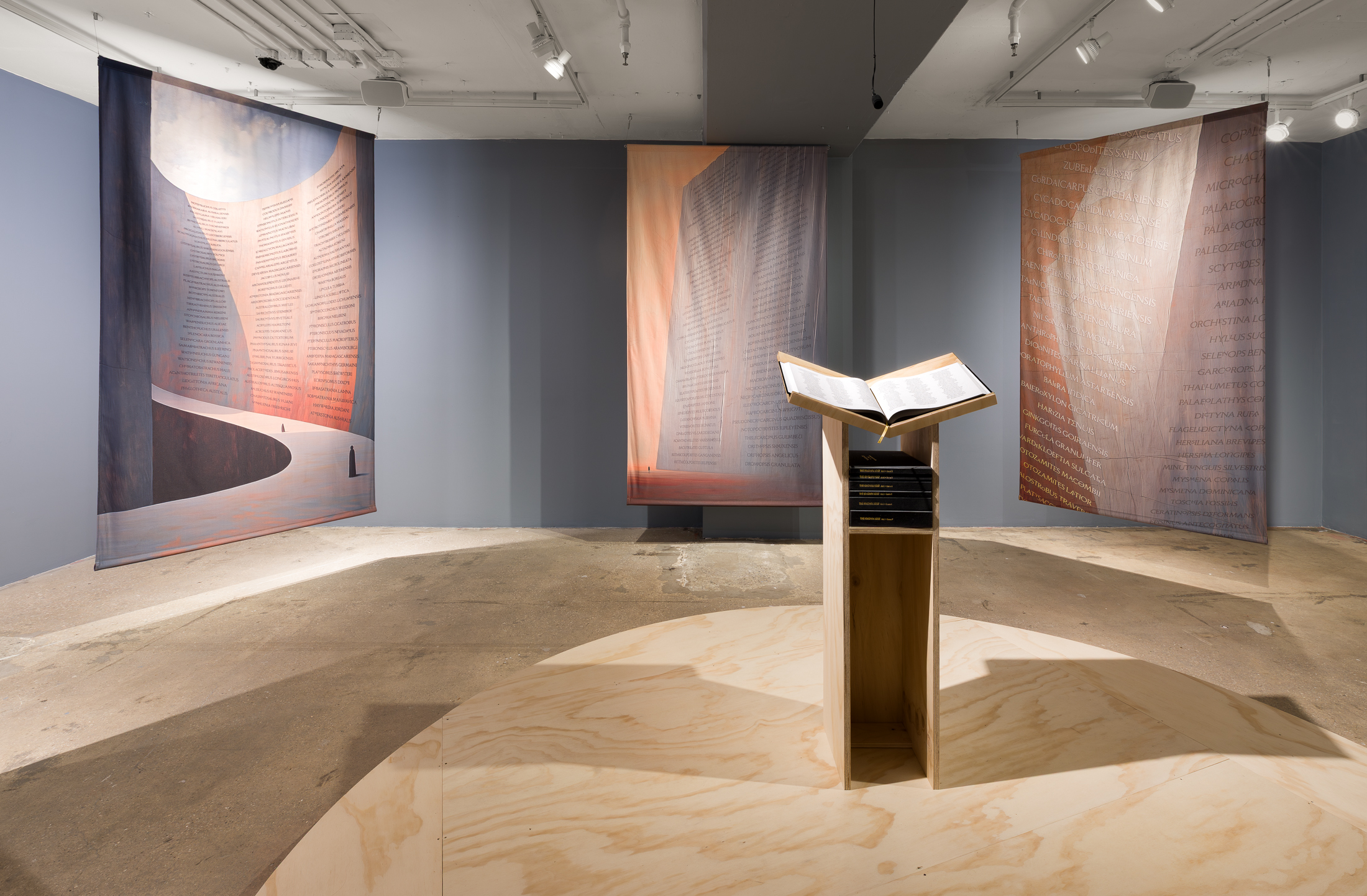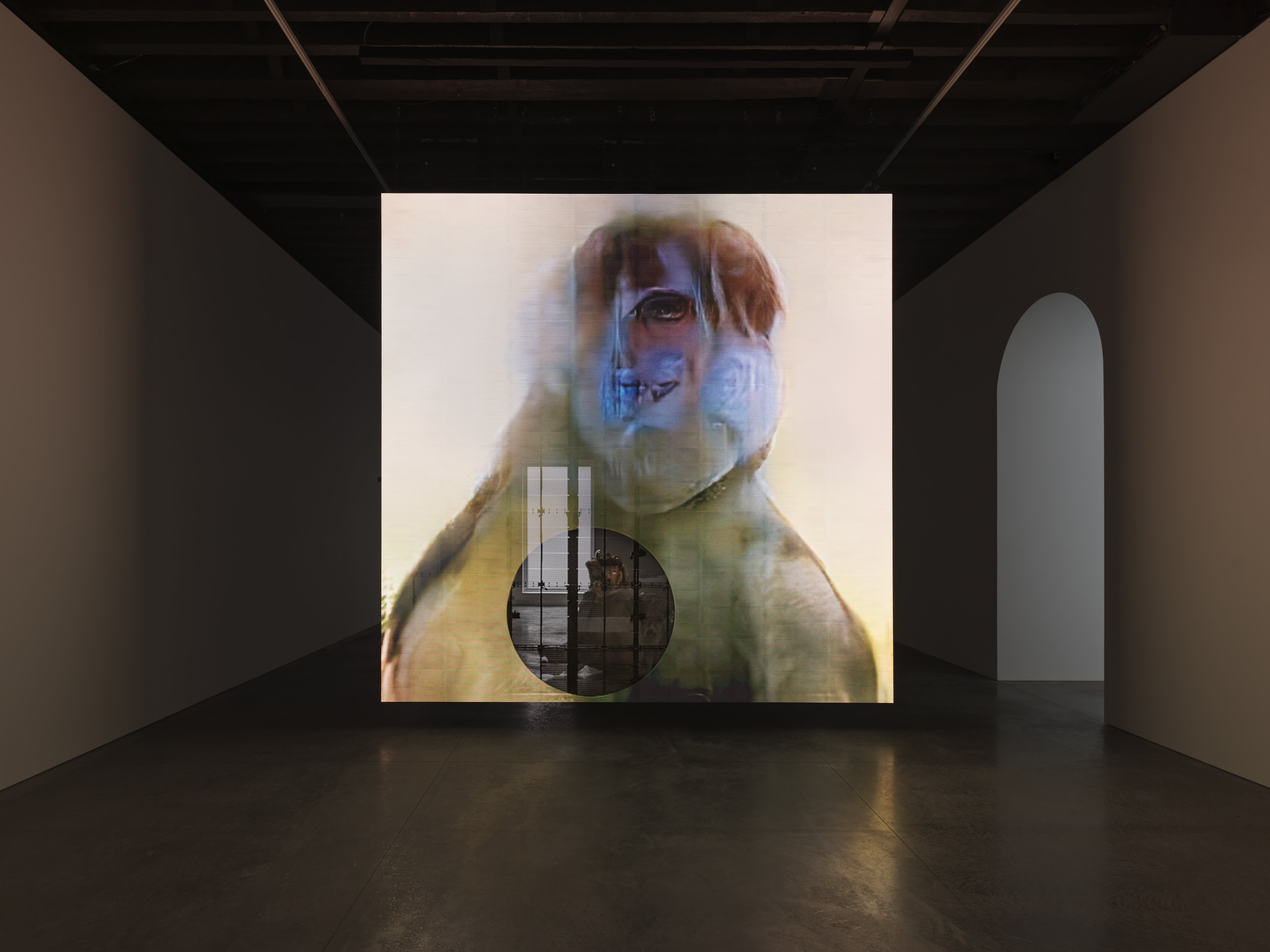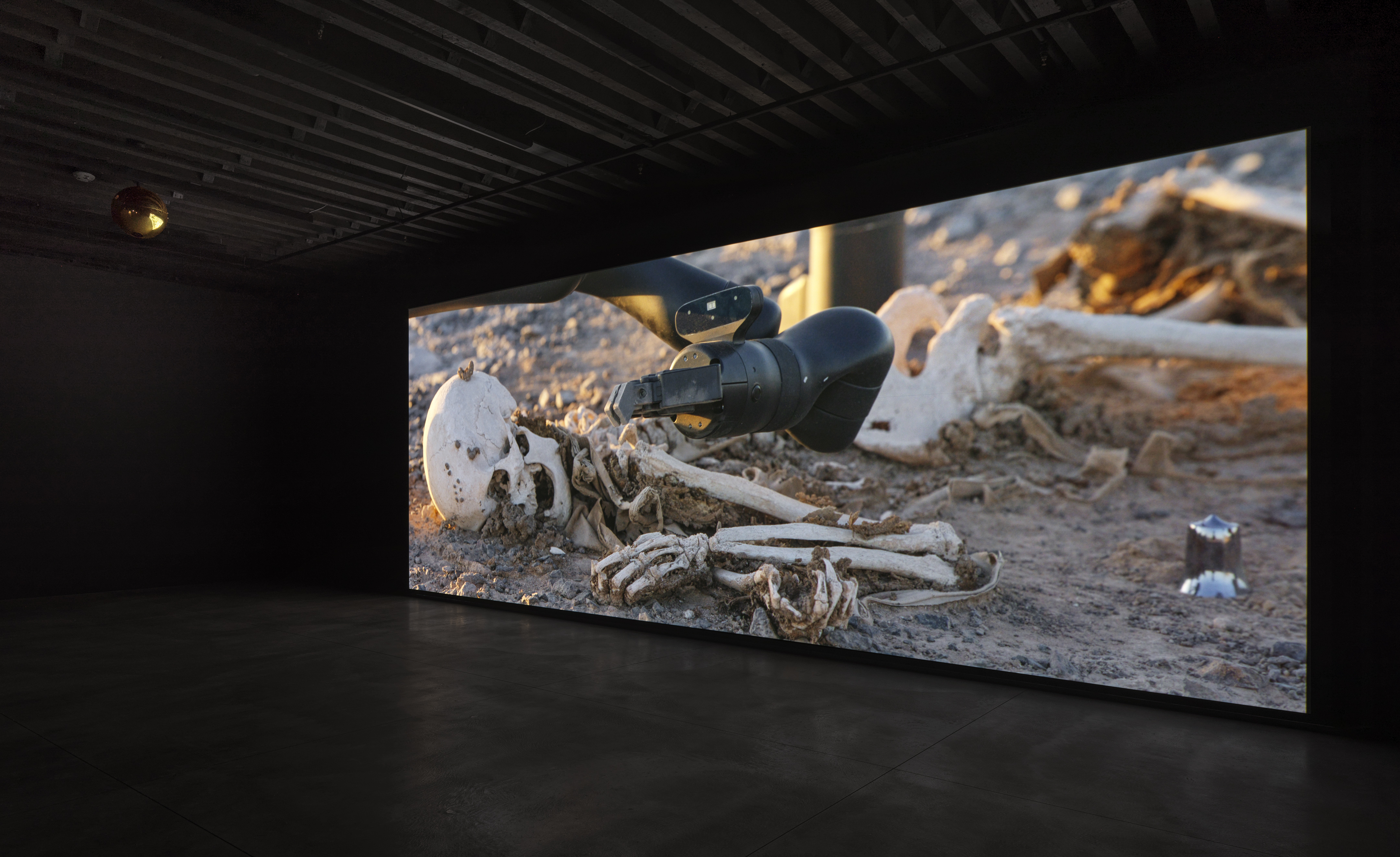
Cognitive Technologies

Cognitive Technologies
Brian Droitcour reviews K. Allado-McDowell’s The Known Lost at the Swiss Institute, on view through September 7, and Pierre Huyghe’s In Imaginal at Marian Goodman Gallery, which closed in June.
In the hands of thoughtful artists, much-derided AI systems can become an instrument for seeing the world differently. They invite us to imagine other kinds of intelligence and to reconsider how we understand our own powers of perception.
Two exhibitions in New York this summer, K. Allado-McDowell’s The Known Lost at the Swiss Institute and Pierre Huyghe’s In Imaginal at Marian Goodman Gallery, take up this challenge, using generative AI and robotics as collaborative, active agents in the work’s creation. They remind us that “AI art” is an imprecise umbrella term encompassing several technologies which can be used by artists to achieve powerful emotional and conceptual effects.
The Known Lost is K. Allado-McDowell’s proposal for a monument to all Earth’s extinct species that paleobiologists have been able to identify. A lectern at the center of the Swiss Institute’s basement gallery has a stack of seven volumes bound in black leather in its base; the pages inside list the scientific Latin names of bygone flora and fauna. Around the gallery’s perimeter hang seven sheets of thin fabric printed with images of a monument in the mountains. The Latin species names appear in these images, too, as carvings in sheer faces of rock. Some of the images show hooded, monklike figures walking the smooth stone paths to give a sense of the dramatic scale.
Allado-McDowell used Midjourney to generate these images. Their style evokes the work of early twentieth-century Lithuanian artist M. K. Čiurlionis, who painted dreamscapes of castles on cliffs. It’s hard to guess which parts of the rock were hewn with human tools and which parts took shape over millions of years; smooth and rough areas are rendered with the same stylized brushwork. In the gallery, music that Allado-McDowell composed for a forthcoming opera plays faintly over the speakers. At the opening, a singer provided a model for how the monument is to be used. She stood at the lectern, opened one of the volumes and sang the names of species.

The Known Lost’s two monuments, the speculative one depicted in the prompted images and the actual one in the gallery, offer a simple but flexible space for reflection and performance. Like many exhibitions these days, the show presents the individual visitor with more information than they can possibly absorb. Elsewhere that might mean hours of video; here it’s thousands of pages of names. The monument refers to what we can’t possibly know, to species that died out millions of years before we existed. It offers some reassurance that the memory of humankind might be etched in stone and kept alive by computation, as Allado-McDowell has proposed doing for other species here. But this reassurance is bound up with a reminder that our species will someday be lost, too. Melancholy permeates The Known Lost; the hope it holds is wrapped in a promise of loss.
The mood of Pierre Huyghe’s In Imaginal was harder to pin down. It unfolded across several rooms on two floors at Marian Goodman’s Tribeca space, all of them dark, hushed, with occasional mysterious sounds emitting from Huyghe’s sculptures. On the first floor was Pierre Huyghe Annlee – Uumwelt (2024), with flaking, flickering images on a large screen made of semi-transparent LED panels. They depicted beastlike figures that resemble thumbs covered in hair, with holes that vaguely resemble eyes. If you’ve seen outputs from GANs or early text-to-image models, the aesthetic is familiar. These forms are almost recognizable but lack the clean boundaries that human vision expects.

Huyghe made this project in collaboration with a Japanese neuroscience lab that devised a method for visualizing brain activity by mapping neural networks to MRI data. The resulting images seek to reveal what appears in a person’s mind when they look at something. Huyghe has presented several iterations of the project since 2018 using various visual stimuli. For this one, subjects were asked to look at Annlee, a manga character Huyghe and Philippe Parreno purchased the rights to in 1999 for a long-running series of works about intellectual property and immaterial identity. But the resulting forms are far from cartoon-like.
They’re raw, primal—glimpses of something deeper, as if the mind, even when faced with a cultural artifact, reverts to the ancient visual language of nature.
The images were not generated in real time; the slideshow ran on a loop, a ghostly reel of mental impressions. Light from the street bled into the gallery space through the translucent LED panels, emphasizing the conditional, spectral quality of these images.
On the second floor was Camata (2024), a self-editing film composed of footage captured by robots in Chile’s Atacama Desert and processed in real time by machine learning software. The desert, one of Earth’s most lifeless environments, here becomes a stage for an uncanny ritual: a human skeleton lies exposed on the sand, surrounded by robots that hover and tend to it with clinical precision. A camera glides along a semicircular dolly track built around the remains, framing the scene in a way that feels reverent, almost sacred.
Yet any hallowed atmosphere is undercut by the unfeeling gaze of the machines. The automated editing, with non-sequential cuts that abruptly shift between day and night, adds to the uncanny atmosphere. As the robots scan the bones, the remnants of the person’s clothing or the fungal growth blooming alongside bleached bone, it becomes difficult to distinguish the organic from the artificial. Camata stages a kind of robotic rite that is cool and emotionless, yet saturated with emotional potential. The film's eerie power lies in its ambiguity.
It asks whether intelligence, biological or synthetic, can truly grasp what it sees or if understanding is always just an approximation, scraping against the surface.

Scattered throughout the exhibition, headlike sculptural forms emitted sounds derived from the Uumwelt data, while three monumental mounds sat behind the Pierre Huyghe Annlee-Uumwelt screen. Based on deep image reconstructions, these works combined organic and inorganic materials, mirroring the hybrid qualities of the images themselves. Networks of wiring threaded throughout the gallery connected the screens to a bank of computers hidden in the basement. The installation transformed the space into a cavernous machine.
Of course, a gallery is always a machine for producing cognition; it engineers specific modes of seeing and thinking. But Huyghe’s work demands different forms of attention. His machine draws our awareness to the discrepancy between how we are usually asked to engage with art and what his systems require. In that gap between the familiar operations of a gallery and the uncanny operations of this hybrid organism, we become more conscious of the kinds of cognition the works activate and of the limits of understanding itself.
At its most vital, art is a way of seeing what was previously unseen—of giving form to phenomena we’re only beginning to perceive.
Both Huyghe and Allado-McDowell suggest that AI, far from being just a derivative tool, can serve that same purpose: as a medium for expanding perception and articulating new kinds of knowledge.
But their projects diverge sharply in orientation. Huyghe’s work fundamentally de-centers the human. Drawing on the early 20th-century biologist Jakob von Uexküll’s concept of the umwelt—the idea that every species inhabits its own perceptual world—Huyghe explores the limits of human cognition by putting it in dialogue with other intelligences. His recent installations use neural networks, MRI data, robotics and live software to render a world that is not fully ours, producing the feeling of being small, offset, part of a larger and stranger system of sense-making.
Allado-McDowell, by contrast, keeps the human at the center. Their work as both artist and theorist concerns what they call “neural media,” emergent systems that reshape how information is processed and meaning is made. In The Known Lost, they use Midjourney and other cataloguing tools to summon images haunted by myth and memory, drawing on generative AI’s archetypal tendencies to produce a digital sublime.
If Huyghe’s installations destabilize, Allado-McDowell’s offer reassurance: artificial intelligence may be competent enough to hold and mourn a world we’re losing. What unites these artists is a conviction that AI isn’t a single thing, nor is it inherently dull or derivative. It can be used toward radically different ends depending on the approach, technologies chosen and questions asked. These exhibitions remind us that these new cognitive technologies, like any artistic medium, don’t just show us what we know—they shape how we know.
----
Brian Droitcour is a critic and curator specializing in digital art.

